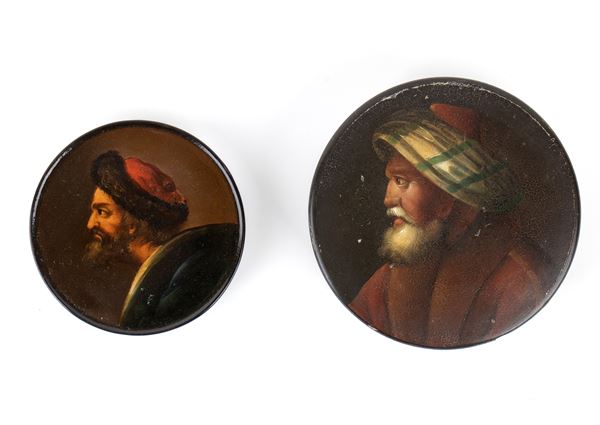60
Two Russian lacquered boxes, 18th - 19th century
Weight: 170 g.
round shaped, depicting respectively one the face of an elderly man caught in profile wearing a turban and one the face of a man, also in profile wearing a red headdress with black fur.
Papier-mâché (Italian for ‘papier-mâché’) is a craft technique that involves the use of shredded paper or rags mixed with an adhesive paste (such as glue, flour or resin) to create solid, light, mouldable objects. The paper pulp can be moulded into different shapes, such as sculptures, masks, decorative objects or containers, and once hardened, the object is often sanded, decorated and painted.
The papier-mâché technique has been used since ancient times in many cultures, but became particularly popular in Europe between the 17th and 19th centuries.
In Russia, the production of papier mâché boxes became particularly important in the 19th century, but developed significantly as early as the 18th century. These boxes were famous for their black lacquer finish with pictorial details, which often depicted scenes from everyday life, landscapes or Russian folklore subjects, and were intended to hold valuables or toiletries.
Height x diameter old: 4 x 12 cm.
Height x diameter: 2 x 9 cm.
€ 400,00 / 600,00
Estimate
€ 200,00
Starting price
Unsold
Live auction 327
Curiosities from European and Oriental Art
Curiosities from European and Oriental Art
Silvers, Ivories, Corals, Icons and Wunderkammer
Palazzo Caetani Lovatelli, tue 25 February 2025
FIRST SESSION
25/02/2025 Hours 12:00 pm
Lots 1/167
SECOND SESSION
25/02/2025 Hours 04:00 pm
Lots 168/346




